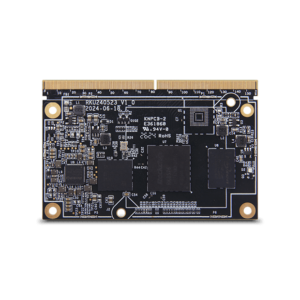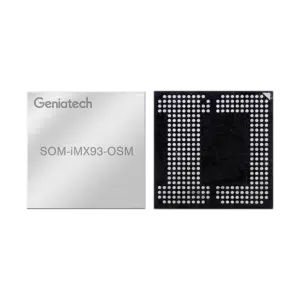System on Module vs. Traditional Development: Which Is Right for You?
System on Module vs. Traditional Development: Which Is Right for You?
Blog Article
The quick progress of engineering has pushed significant improvements in embedded methods, among which can be the computer on module Working as a link between custom electronics and off-the-shelf modules, the SoM is redefining how developers strategy embedded process design. That website shows the primary understanding of a Process on Module and their rising purposes in a variety of industries.

What is a Program on Component (SoM)?
A Program on Element (SoM) is really a small, ready-to-use table that combines most of the primary components of a system about the same module. That typically includes the processor, storage, power management devices, and often additional peripherals like Wi-Fi or Ethernet. Unlike a traditional single-board pc, an SoM doesn't come with fittings and interface locations pre-installed, meaning it should be along with a company table to form a whole system.
Made to improve growth workflows, the modular nature of an SoM enables developers to skip the delicate process of designing and building every individual portion from scratch. By adopting an SoM, businesses can focus more on the application-specific features of the products.
Benefits of Using System on Element
The integration of a whole process on one component gift suggestions several benefits. First, it dramatically decreases enough time necessary for solution development. Pre-tested segments ensure security, saving weeks of work for executive teams.
Furthermore, the scalability of an SoM allows firms to regulate performance levels based on project requirements. For instance, a low-cost solution can easily scale right into a high-end solution by trading the processor in the module while keeping the company board design. This process decreases design risks while selling long-term cost-efficiency.
Finally, the consistency of an off-the-shelf component ensures high compatibility with current tools and frameworks, rendering it perfect for both little startups and big enterprises striving to hit the industry quickly.
Important Purposes of SoM in Embedded Methods
The usage of Program on Modules spans several high-demand industries including although not limited by medical units, automation, and client electronics.
Medical Products
Accuracy and stability are paramount in healthcare. System on Modules with protected processing features are stuck in displays, imaging devices, and portable diagnostic tools.
Commercial Automation
Sturdy and energy-efficient, an SoM is crucial for commercial control programs and autonomous robotics. Its scalable architecture helps high-speed information processing and IoT connectivity.
IoT Devices

Consumer items like intelligent thermostats, wearable devices, and even home personnel include an ultra-compact Process on Module for smooth performance.
The System on Module remains to achieve grip because of its reduced complexity and flexibility, cementing itself as a future-proof answer in the stuck methods sphere. Business leaders are actually leveraging these segments, and their scope is expected to grow further as technology evolves.
Report this page